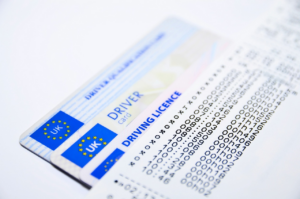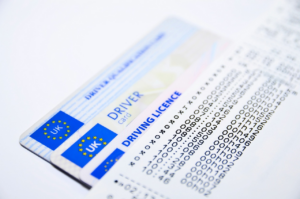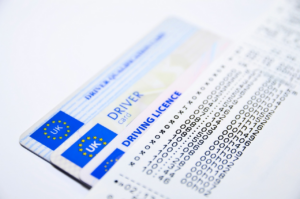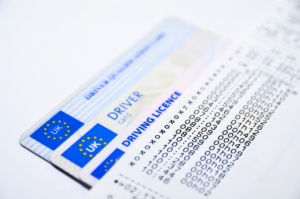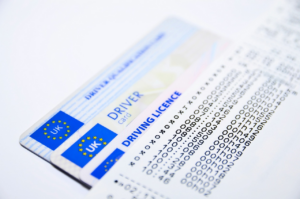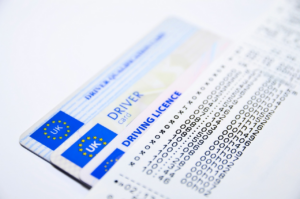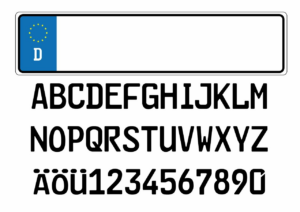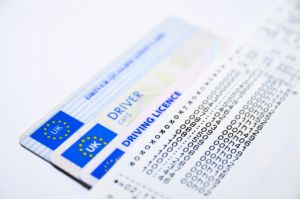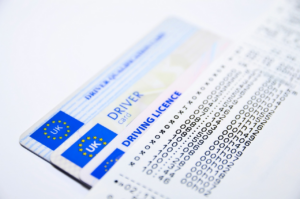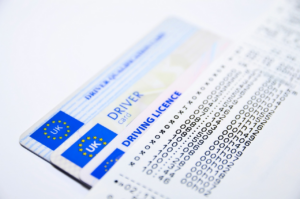If you’re preparing to take the driving exam in Singapore, it’s important to be prepared for any situation that may arise on the road.
While you may be familiar with the routes and traffic laws in your area, the exam may take you to unfamiliar territory where you may encounter a range of traffic situations.
It’s important to stay calm, alert, and prepared to handle any unexpected situations that may come your way.
In this article, we’ll go over some tips and strategies for handling unfamiliar traffic situations in the Singapore driving exam.
From sudden lane changes to confusing road signs, unexpected obstacles and more, we’ll give you the tools you need to navigate any situation with confidence and ease.
With practice, preparation, and a clear understanding of the rules of the road, you’ll be well-equipped to pass the driving exam and become a safe and responsible driver on Singapore’s roads.
Stay Calm and Alert
Staying calm and alert is key when facing an unknown driving scenario during your test in the Lion City. It’s normal to feel a bit anxious or overwhelmed when encountering a situation you’ve never seen before. However, it’s important to remember that your ability to handle the situation calmly and safely is being assessed.
Take a deep breath, clear your mind, and focus on the road in front of you. As you approach the unfamiliar situation, take note of any signs or signals that may provide clues as to how to proceed. Keep your eyes on the road and scan for any pedestrians, cyclists, or other vehicles that may be in the area.
If you’re unsure of what to do, don’t hesitate to use your indicators or pull over to the side of the road to assess the situation. Remember, the key is to remain alert and aware of your surroundings, while staying calm and collected under pressure.
Understand the Situation
When faced with a new scenario on the roads, take a moment to assess the situation and gather as much information as possible. This will help you understand the unfamiliar traffic situation and respond appropriately.
Here are some things you can do to understand the situation better:
-
Observe the traffic flow: Take a moment to observe how other drivers are navigating the situation. This can give you an idea of how to approach the situation yourself.
-
Look out for road signs: Road signs can provide important information about the situation, such as speed limits, lane closures, and detours.
-
Check your GPS: If you’re unsure about where you are and where you’re going, check your GPS. This can help you understand the route you need to take and any potential obstacles or road closures.
By taking the time to understand the unfamiliar traffic situation, you can make better decisions on how to navigate it safely.
Remember to always stay calm and alert, and don’t hesitate to ask for help if you need it.
Take Precautionary Measures
Before hitting the road, it’s essential to take precautions to ensure a safe and smooth journey. This is especially crucial when encountering an unfamiliar traffic situation during your Singapore driving exam.
The first thing you should do is to slow down and assess the situation. Take note of any road signs, traffic lights, or markings that can help you navigate through the area. Keep your eyes on the road and avoid any distractions that can cause you to lose focus.
Next, it’s important to signal your intentions to other drivers on the road. Use your turn signals to indicate your next move, whether you’re changing lanes or making a turn. Make sure you give other drivers enough time to react to your signals, especially if you’re driving in a busy area.
If you’re unsure of what to do, it’s better to err on the side of caution and wait until it’s safe to proceed. Remember, your safety and the safety of other road users should always be your top priority.
Handling Sudden Lane Changes
It’s crucial to be prepared for unexpected lane changes while driving, as they can be a potential hazard on the road. When encountering a sudden lane change, the first thing you should do is stay calm and avoid sudden movements.
Check your mirrors and blind spots to assess the situation, and slow down if necessary. If you need to change lanes yourself to avoid a collision, make sure to signal your intentions clearly and move gradually into the new lane.
If you’re unable to change lanes safely, try to slow down even more and give the other driver space to complete their maneuver. Remember, safety should always be your top priority when encountering unfamiliar traffic situations. By staying alert and responding calmly, you can help ensure a safer driving experience for yourself and those around you.
Navigating Confusing Road Signs
When navigating confusing road signs, it’s important to understand the different types of road signs, follow road signs and markings, and use GPS and navigation tools.
There are various types of road signs, including regulatory, warning, and informational signs, each with their own specific meanings and symbols.
To ensure safe and efficient driving, it’s essential to follow road signs and markings, such as speed limits and lane markings, and use GPS and navigation tools to help navigate unfamiliar roads.
Understanding Different Types of Road Signs
Understanding the different types of road signs can be helpful in navigating unfamiliar driving situations. Road signs are designed to provide drivers with essential information, and they come in various shapes, colors, and sizes. By learning the meaning of each sign, you can anticipate what’s ahead and take the necessary precautions to avoid accidents.
Traffic signs can be divided into three categories: regulatory, warning, and information signs. Regulatory signs are usually white with black letters or symbols and indicate what drivers are required to do. Some examples of regulatory signs include speed limit signs, stop signs, and yield signs.
Warning signs, on the other hand, are typically yellow or orange and alert drivers to potential hazards. These signs are essential in unfamiliar situations as they warn you of things like sharp curves, steep hills, and pedestrian crossings.
Finally, information signs are usually blue or green and provide drivers with useful information about the road ahead, such as directions to the nearest petrol station or rest area.
In conclusion, understanding the different types of road signs is crucial in navigating unfamiliar driving situations. By knowing what each sign means, you can make informed decisions and stay safe on the road. Remember to always pay attention to the signs around you and follow them carefully to avoid accidents.
Following Road Signs and Markings
Following road signs and markings is crucial for safe and efficient driving, as they provide essential guidance and information to drivers. Road signs are designed to communicate important messages and warnings to drivers, such as speed limits, road conditions, and upcoming intersections.
It’s important to pay attention to these signs and adjust your driving accordingly to ensure your safety and the safety of others on the road. In addition to road signs, road markings also play a critical role in guiding drivers. These markings include painted lines, arrows, and symbols on the road surface.
They provide information on lane boundaries, turning lanes, and parking areas. Following these markings helps to prevent accidents and ensures a smooth flow of traffic. Remember to always stay alert and aware of your surroundings while driving, and to obey all road signs and markings to stay safe on the road.
Using GPS and Navigation Tools
Using GPS and navigation tools can help you navigate through unfamiliar roads and reach your destination with ease, allowing you to enjoy the scenic drive without worrying about getting lost or missing a turn. Here are some tips to make the most out of your GPS and navigation tools:
-
Update your maps regularly: Make sure your GPS is up-to-date with the latest maps and software updates. This will ensure that you have access to the most accurate and current information about the roads and traffic conditions.
-
Use voice-guided navigation: Most GPS devices come with voice-guided navigation, which provides turn-by-turn directions and alerts you about upcoming turns and exits, making it easier to focus on the road.
-
Set your destination before you start driving: It’s important to set your destination before you start driving, so you don’t have to fiddle with your GPS while on the road. Take a few minutes to enter your destination and check the route before you start driving.
-
Use offline maps as a backup: In areas with poor network coverage, GPS devices can struggle to connect to the internet and provide accurate directions. To avoid getting lost in such situations, make sure you have offline maps downloaded on your device as a backup. This will ensure that you have access to maps even when you don’t have an internet connection.
By following these tips, you can make the most out of your GPS and navigation tools and navigate through unfamiliar roads with confidence. Remember to always stay alert and pay attention to road signs and traffic signals, even when using GPS.
Dealing with Unexpected Obstacles
When faced with unexpected obstacles on the road, it’s important to stay calm and react quickly to avoid any potential accidents. The first thing you should do is assess the situation and determine the best course of action.
For example, if there’s a fallen tree blocking the road, you may need to find an alternative route or wait for help to arrive. If the obstacle is something that can be safely navigated around, such as a pothole or debris in the road, slow down and steer around it.
However, if the obstacle is larger and requires you to come to a complete stop, be sure to signal to other drivers that you’re stopping and turn on your hazard lights. Always remember to follow traffic laws and use your best judgment when dealing with unexpected obstacles on the road.
By staying calm and reacting quickly, you can help ensure your safety and the safety of others on the road.
Communicating with Other Drivers
When it comes to communicating with other drivers on the road, there are a few key points to keep in mind.
Firstly, using hand signals and verbal cues can help convey your intentions to other drivers, especially in situations where it may be difficult to see or hear each other.
Secondly, it’s important to know how to respond to other drivers’ signals, such as when they are indicating a turn or lane change.
Finally, cooperating with other drivers on the road can help ensure a safer and smoother driving experience for everyone involved.
By keeping these points in mind, you can become a more effective and confident communicator on the road.
Using Hand Signals and Verbal Cues
Don’t forget to use hand signals and verbal cues to communicate with other drivers on the road. When encountering an unfamiliar traffic situation during your Singapore driving exam, it’s important to stay calm and communicate effectively with other drivers.
Here are three ways to use hand signals and verbal cues to make your intentions clear:
-
Use your turn signals: Turning on your blinker is a simple and effective way to let other drivers know where you’re headed. Make sure to turn on your blinker at least 100 feet before making a turn or changing lanes.
-
Use hand signals: Sometimes turn signals may not be enough to communicate your intentions. If you need to slow down or stop suddenly, use hand signals to let other drivers know. For example, extend your hand out the window and point downwards to signal that you’re slowing down.
-
Use verbal cues: If you need to communicate with other drivers, use clear and concise verbal cues. For example, if you need to merge into another lane, say "I’m merging" or "Can I merge?" to let other drivers know your intentions.
By using these techniques, you can effectively communicate with other drivers and navigate unfamiliar traffic situations with confidence.
Responding to Other Drivers’ Signals
Responding to other drivers’ signals is crucial for safe and efficient driving, so it’s important to be aware of common signals and how to react to them.
The most common signal is the turn signal, which is a flashing indicator that tells you which direction the driver intends to turn. If you see a car with their turn signal on, it’s important to slow down and give them space to make the turn safely. You should also avoid passing them on the side they are indicating to turn towards.
Another important signal to be aware of is the brake lights. When you see brake lights, it means the driver is slowing down or coming to a stop. In this case, you should also slow down and come to a stop behind them, leaving enough space to prevent a collision.
If you see a driver flashing their headlights at you, it could mean they are trying to get your attention or warn you of a potential hazard ahead. In this case, it’s important to be alert and aware of your surroundings to avoid any potential dangers.
By being aware of these signals and reacting accordingly, you can help ensure a safe and efficient driving experience for yourself and other drivers on the road.
Cooperating with Other Drivers on the Road
To effectively cooperate with other drivers on the road, it’s important to understand the rules of the road and anticipate the actions of other drivers.
This means that you should be aware of the speed limits, traffic signs, and signals in the area. You should also be prepared to adjust your driving according to the road conditions, weather, and other factors that could affect your safety.
Another important aspect of cooperating with other drivers is to communicate effectively. This means using your signals, horn, and lights to signal your intentions to other drivers. You should also be aware of other drivers’ signals and respond appropriately.
For example, if a driver is flashing their headlights, it could mean that they want you to give way or that there’s a hazard ahead. By being aware of your surroundings and communicating effectively, you can help ensure a safe and smooth driving experience for yourself and others on the road.
Practice and Preparation
You’ll be well-prepared for any challenging traffic scenarios by consistently practicing and staying up-to-date on road regulations. This means taking time to read up on new driving laws and regulations, as well as regularly practicing your driving skills. One way to do this is by taking practice driving tests or enrolling in a driving school that offers refresher courses.
Another helpful tip is to familiarize yourself with the roads and routes you’ll be driving on. This means planning your journey in advance, checking for traffic updates, and mapping out alternative routes in case of unexpected road closures or detours. By doing so, you’ll be better equipped to navigate your way through unfamiliar traffic situations and avoid potential accidents.
Remember, preparation is key when it comes to driving in Singapore, so take the time to practice and stay informed to ensure a safe and stress-free driving experience.
Frequently Asked Questions
What are the consequences of not following traffic rules in Singapore?
Not following traffic rules in Singapore can result in serious consequences. You could receive a fine, demerit points, or even face imprisonment depending on the severity of the offense.
For minor offenses such as jaywalking or littering, you may receive a fine of up to $1,000. However, for more serious offenses such as reckless driving or driving under the influence, you could face imprisonment for up to 5 years and a fine of up to $10,000.
Additionally, demerit points will be added to your driving record for every offense committed, and accumulating too many points can result in the suspension or even revocation of your driver’s license.
It is important to always follow traffic rules to ensure the safety of yourself and others, as well as to avoid these consequences.
What should you do if you witness a road accident?
If you witness a road accident, the first and most important step is to ensure your own safety. Park your vehicle at a safe distance and turn on your hazard lights.
Check if anyone is injured and call for emergency services immediately. If you have a first-aid kit, offer assistance if necessary.
While waiting for help to arrive, direct traffic away from the accident site and keep bystanders at a safe distance. If possible, gather information such as the license plates of the vehicles involved and the contact details of any witnesses.
Remember to stay calm and composed, and don’t attempt to move any injured individuals unless it’s absolutely necessary. Your quick thinking and actions may prove critical in saving lives and preventing further accidents.
How can you prevent your vehicle from getting towed in an unfamiliar area?
To prevent your vehicle from getting towed in an unfamiliar area, the first step is to research the area beforehand. Look for signs indicating where parking is allowed and if there are any restrictions or time limits.
If you’re unsure, ask a local or a parking enforcement officer. Always make sure to park in designated areas and avoid blocking any driveways or fire hydrants.
If you do find yourself in a situation where your vehicle may be towed, try to contact the tow company as soon as possible to prevent them from taking your car. It’s also important to have the necessary documents, such as your driver’s license and registration, readily available.
By being prepared and informed, you can avoid the frustration and expense of having your vehicle towed in an unfamiliar area.
What are the legal requirements for driving in Singapore?
When driving in Singapore, it’s important to understand the legal requirements.
First and foremost, you must have a valid driver’s license and ensure that your vehicle is registered and insured.
It’s also mandatory to wear a seatbelt while driving and to adhere to the speed limits posted on the roads.
Additionally, you mustn’t drink and drive, as there are strict laws against driving under the influence of alcohol.
It’s also important to note that using a mobile device while driving is prohibited, and you can be fined for doing so.
By following these legal requirements, you can ensure that you’re driving safely and avoiding any legal trouble on the roads of Singapore.
How can you report aggressive driving or road rage incidents to the authorities?
If you witness or experience aggressive driving or road rage incidents on the roads of Singapore, it’s important to report these incidents to the authorities as soon as possible. You can call the police at 999 or 112, or use the SGSecure app to report the incident with details such as the location, time, and vehicle registration number.
It’s important to remain calm and not engage in any aggressive behavior yourself. Remember, road safety is everyone’s responsibility, and reporting such incidents can help prevent future accidents and keep the roads safe for all drivers.
Conclusion
So there you have it, a guide on what to do if you encounter an unfamiliar traffic situation during your Singapore driving exam.
Remember to stay calm and alert, understand the situation, and take precautionary measures.
If you encounter sudden lane changes, navigate confusing road signs, or unexpected obstacles, make sure to communicate with other drivers and practice proper driving techniques.
The key to passing your driving exam is preparation, so make sure to practice as much as possible before your test.
Familiarize yourself with different road conditions and traffic situations to ensure that you’re ready for anything that may come your way.
With these tips in mind, you can confidently tackle any unfamiliar traffic situation that you may encounter during your Singapore driving exam.
Good luck and happy driving!







